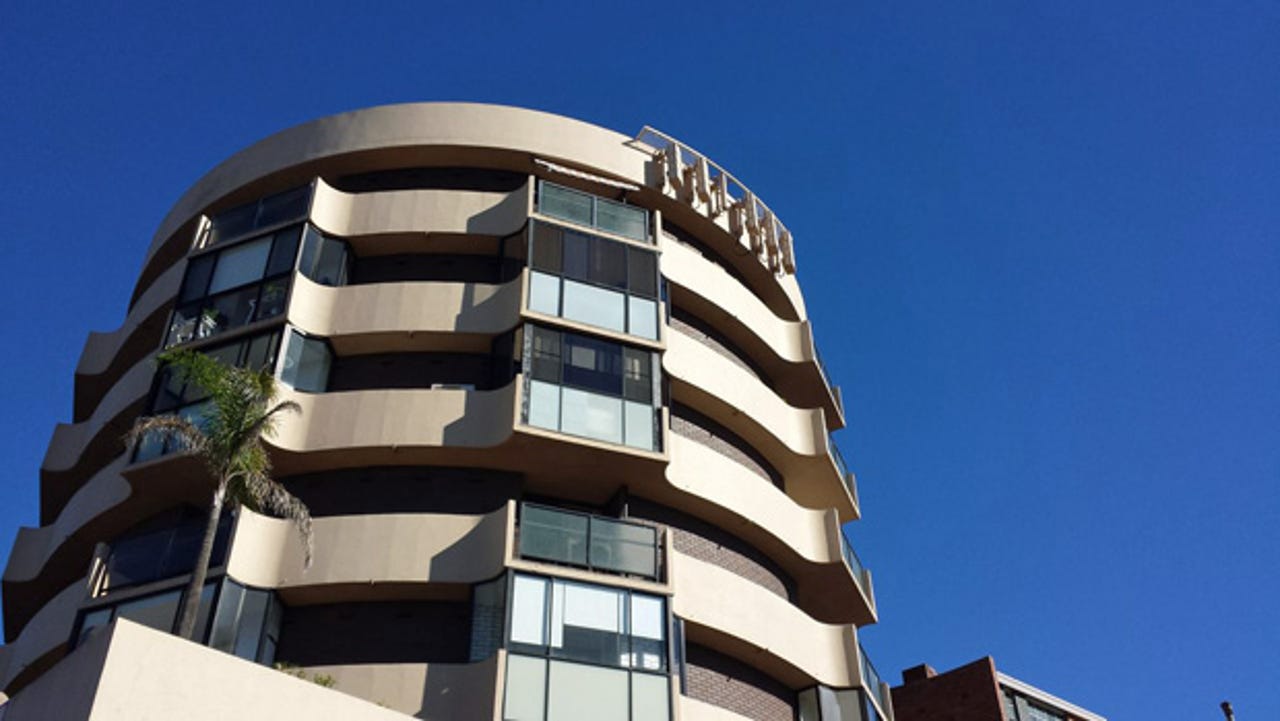Inside Telstra's super-fast 4G rollout


Super-fast 4G broadband is not a term that would be used all that often in a retirement home, but it is at the Rose Bay Towers retirement apartment block in Sydney this week, as Telstra and Ericsson set about switching on their 4G network there.
Telstra has set its sights on upgrading 1,000 base stations by the end of June to 4G, bringing the total number of sites with 4G connectivity to 2,000 — covering over 66 percent of the Australian population.
The company already has over 2.1 million 4G devices on its network across Australia.
While on the surface, it appears that the company is meeting its upgrade targets at a blistering speed — having only launched the network at the end of 2011 — months and years of work and planning goes into every single site upgrade.
As he took ZDNet up to the rooftop of the Rose Bay Towers retirement village, Geoff Piper, Telstra's project manager for New South Wales, said that the lead time for the 4G upgrades can run from six months to two years in length.
"On average, it is about six months. It depends on the site. Some you can do quite quickly if everything lines up, but in general, it is about a six-month process. If it is a new site, [it is] 18 months to two years."
In addition to getting all the antennas, radio, and network equipment for the upgrade, and ensuring that the site is ready and the crews available to do the upgrade, Telstra also needs to seek approval from the local council, which is often an arduous task in and of itself.
"We do a lot more community consultation nowadays than we used to," he said. "And that chews up a fair bit of time itself."
The site is connected back to the rest of Telstra's network through fibre backhaul. However, Vodafone has microwave backhaul infrastructure installed at this location.
In addition to dealing with local councils and the community, the telco giant also needs to renegotiate with property owners to add the 4G network equipment to the building. Piper said the agreements need to cover all equipment that would be required for the upgrade, not just the antenna.
The owner and manager of the Rose Bay retirement home has had an agreement with Telstra, as well as Optus and Vodafone, for several years.
Although Telstra is seen as being a very formidable negotiator within the government and the industry in general, Piper admitted that the owner was one of the toughest negotiators he has ever dealt with when it came time to get approval to add 4G network gear to her building.
In the case of Rose Bay Towers, there are a number of antennas stationed on the outside of the roof facing toward the affluent suburb of Bellevue Hill. There were a number of ways to go about an upgrade, but Piper said that because the building is on a busy street, the options were limited.
"We use cherry pickers, cranes, depending on what it is. This one in particular, as you can see, you can't block off the street," he said. "It's [also] a block of units, so people don't want you working outside their window at night. We do some pretty different stuff."
For this upgrade, Telstra opted to scale the building with a roper tasked with removing old antennas and replacing them with antennas for 3G and 4G. As veteran roper Graham suited up to climb over the roof and replace the antennas, he was quick to point out that he isn't a Rose Bay Towers resident.
Prior to the upgrade, the dining area underneath the immediate construction area, where residents in the retirement village gather for meals, was roped off to ensure that there was no risk of injury in the process of the upgrade.
The new antennas will be painted to match the colour of the building, which is one of the easier methods of blending the infrastructure into a site. Disguising a tower as a tree, as NBN Co has been known to do, is one of the more expensive options, Piper said. One of the most expensive camouflage jobs Telstra has done was making a base station on Cockatoo Island look like a water tower, according to Piper.
There are a number of safety checks that need to take place before roping over the building. Only qualified ropers are able to undertake the task, and an emergency roping kit sits ready in case of any emergency. Piper said that the 4G upgrade has been one of the safest Telstra has undertaken.
As he climbed over the roof and settled in next to the antenna, Graham discovered that the bolts were stuck on the antenna that needed to be removed, and it had to be sawn off the building before the new antenna could be installed.
Departing Rose Bay and heading to Bondi, where Telstra, Optus, and Vodafone share a disguised tower atop a brand new apartment block just off the iconic Bondi Beach, Telstra technology specialist Anthony Spiclin explained that while Piper is focused on getting each site upgraded, it is his role to ensure that the site fits into the rest of the network and performs well.
This requires a fair amount of negotiations between the two sections of Telstra, because while Spiclin might have an ideal location for a tower to be built, the cost to build, or obtaining permission to build, in such a location might be out of Telstra's reach.
"We need to have a think about how far we want these to go. So we have a coverage objective and a capacity objective for a particular site, and then we've got to also think about where the other sites are," he said.
"We have to make sure these sites all work together and mesh in, and don't do too much work. We try to balance off how much traffic they carry, how many people are connected to those sites. We've got the local design issues on this site, and then we've got to think how we interact with all the other sites around it."
The Bondi site had to have a special plastic cover placed over the tower in order to make it blend into the rest of the building. Spiclin said the plastic had been especially designed so that telcos could shape it and colour it as required, but still be able to get signal through it unhindered.
For the Rose Bay site, he said, Telstra will examine how it interacts with the towers around it in North Bondi, Vaucluse, Bellevue Hill, and an exchange in Rose Bay.
Once an antenna is installed, Spiclin said that Telstra can spend weeks or months fine tuning the antennas and the rest of the network to ensure optimal coverage. This can be done one of two ways: Either physically changing the position of the antenna at the site, or shifting it, using a device built into the antenna, that allows Telstra technicians to shift its position remotely.
Spiclin said that it usually isn't a case of fine tuning a single site. Instead, it is about making that site work with the rest of the network.
"There's definitely fine tuning there. That normally happens at a larger scale with a cluster of sites. We fine tune a cluster, because it is a network of sites," he said.
"With these sites, we'll be fine tuning them for weeks, or sometimes months, to get the best outcome."
Inside the Bondi base station, Telstra's legacy Ericsson 2G and 3G network gear sits across from the much smaller new long-term evolution (LTE) equipment. Telstra shares space in this site with Optus and Vodafone.
Telstra's Piper and Spiclin (pictured centre) work with a number of contractors from several different companies.
Ericsson is the construction partner for this location, but is just one of four contractors that has been brought on to do the 4G site upgrades for Telstra, Piper said. About 50 percent of the upgrades are being completed by Telstra itself, and he said that he tries to keep teams working in one location across multiple sites, so that if there is an issue stalling one site, they can go work on the other site.
"Normally when I allocate sites, I try to keep the guys in geographic areas as much as I can, so if they can't do something on one of the sites, they can move to another quite easily and you don't really cop terribly much downtime."